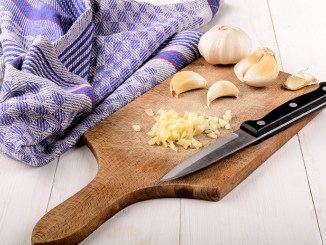
Unlike many fruits, olives have a bitter taste and are rarely eaten raw. Often, they must be cured in order to be palatable. Oleuropein, which gives olives their bitterness, is drawn out during the curing process. Depending on the type of olive and the region where it is grown, several curing methods are used.
- Water curing requires months of repeated soaking and rinsing of olives.
- Brine curing involves immersing olives in a water and salt solution for one to six months. Sometimes lactic, citric or ascorbic acid is added.
- Dry curing means olives are layered with salt and placed in drums that are rolled weekly to aid dehydration. After bitter compounds are removed, olives are rinsed and coated with olive oil.
- Oil curing refers to soaking olives in oil for several months. Sometimes “oil-cured” is used in reference to the final stage of the dry curing process.
- Lye curing involves washing unripe olives in a lye solution to speed the de-bittering process. Olives are then rinsed and soaked in a brine solution. The variety of colors among table olives is mainly due to their stage of ripeness at the time of harvest. Like many fruits, olives start off green in color and, as they mature, become deeper shades or different hues entirely. Olives may be picked either immature or ripe, depending on the variety.
Olive color can be affected by oxidation during fermentation, which can turn olives brown or black, or the addition of food-grade dyes or compounds such as ferrous gluconate. Flavor and texture are primarily determined by the olive’s oil content, size, ripeness and growing region — as well as how it ferments through curing. Dressings, herbs or other ingredients added to olives also affect flavor.
Nutritionally speaking, olives provide mainly monounsaturated fat, which research shows may help reduce LDL cholesterol and lower risk of heart disease and stroke. The amount of fat, calories and polyphenols varies among olives. On the branch, they are a low-sodium food; however, the curing process not only removes many natural polyphenols, but also increases sodium content.
Alfonso
From the Tacna province of Peru, these ovoid-shaped olives range in color from deep violet to eggplant purple due to soaking in red wine or red wine vinegar after brining. Their soft, juicy flesh and distinct vinegary, slightly sour taste sets them apart.
Amfissa
Golden, green or naturally ripened black, this olive’s color depends on its maturity. Brine-cured and often pitted, this Greek olive has a soft flesh and a mildly sweet, mellow flavor.
Beldi
Dry-cured in salt, then washed and packed in olive oil, these intensely flavored, small and wrinkly olives come from Morocco. They often are used in tagines and salads or eaten on their own, sprinkled with olive oil and hot pepper.
Castelvetrano
A Sicilian favorite that’s popular as a snack, Castelvetranos have a green-apple color, meaty texture and buttery flavor. Keep these olives in brine until ready to serve; they oxidize quickly and lose their bright color.
Cerignola
Harvested in the Puglia region of Italy, these large green or black olives are about the size of a walnut, crisp to the bite and have a mild, buttery flavor. Served whole or pitted and stuffed with garlic, salami, sundried tomatoes or cheese, Cerignolas are frequently found on antipasti platters.
Gaeta
With a tart and citrusy taste, these small, purplish-brown to black beauties from Puglia are the most popular Italian table olives. They can be dry-cured, which gives them a shriveled, wrinkly skin, or brine-cured and dipped in olive oil so they’re plump and juicy.
Gordal
If this green beauty looks familiar, it’s because it’s the jumbo version of Manzanilla and Spanish Queen. Grown in the Seville province of southern Spain, Gordal — which translates to “fat one” — has a firm, meaty bite and a light fruity and peppery flavor.
Kalamata
These popular Greek olives have a distinct almond shape, shiny, dark-purple skin and a smoky, fruity flavor. During the curing process, they’re often slit to allow red wine vinegar to penetrate the flesh.
Liguria
Tiny olives with big flavor, Ligurias — sometimes called Taggiasca olives — are grown in Italy near the French border. Similar to Niçoise olives, they’re cured in brine, sometimes with stems attached, then packed in olive oil and aromatics such as bay leaves, thyme and rosemary.
Manzanilla
With a crisp bite and slightly smoky, almond flavor, these brine-cured Spanish olives are often stuffed with pimiento. Well-known for garnishing a martini, they’re also used in olive-loaf deli meat and the Spanish rice dish, arroz con pollo.
Mission
These black olives are actually green olives made black through a combination of lye-curing, oxygenation and the addition of ferrous gluconate (a type of iron). Unlike other olives, they are not fermented and are typically processed within a week. These familiar canned olives have a mild flavor and semi-firm texture.
Niçoise
Small and oval with a purplish-brown hue, Niçoise olives are a signature ingredient in French dishes, such as Niçoise salad and tapenade. Their light flavor also makes them enjoyable to eat on their own.
Nyon
Dry-cured in salt and then aged in brine, these tiny olives from the south of France are jet-black with a wrinkly texture. Nyons have a mild, salty and bitter taste and a plump, meaty texture. They’re often tossed with traditional herbes de Provence.
Picholine
Crisp and crunchy with a nutty flavor and slight licorice undertone, these French olives are harvested while green and brine-cured. They’re commonly eaten as a snack or hors d’oeuvre and used in martinis and cocktails.
Spanish Queen
Processed through a method known as the “Spanish Cure,” these green olives are washed in lye for de-bittering, then rinsed and fermented in brine. Like Manzanillas, they often are stuffed with pimiento, but also are available whole, pitted or stuffed with ingredients such as almonds, garlic, jalapeños or blue cheese.



